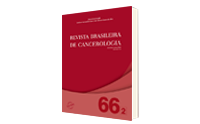Tobacco Industry Interference in Brazil: the Necessity of Settling Accounts
DOI:
https://doi.org/10.32635/2176-9745.RBC.2020v66n2.878Keywords:
Tobacco Industry, Tobacco-Derived Products Publicity, Tobacco Use Disorder/economics, Compensation and Redress, Social MarketingAbstract
Introduction: In Brazil, illegal actions of advertising, promotion, and sponsorship by part of the tobacco industry are increasingly identified in music events, and through social media, aimed mainly to attract young people to use cigarettes. Objective: To develop a methodology that allows the creation of a parameter of quantification of the negative impacts to the health sector of non-compliance with the law. Method: Combination of the current national information about i) the equivalence between “mean direct cost of medical care” and “deaths by diseases attributable to tobacco addiction” and ii) the equivalence between “the portion of the profit translated into marketing actions” and “deaths of smokers who contributed for the generation of this profit through purchase of cigarettes” in order to obtain the relation between “direct cost of the treatment” vs “portion of the profit translated into market actions”. The diseases selected were those that presented the biggest direct cost of treatment attributable to tobacco. Results: For every cent invested in marketing strategies by the tobacco industry, Brazil spends 1.93 times more financial resources to treat tobacco-related diseases. Conclusion: The measurement of the liability for non-compliance of the tobacco national legislation is essential to offset part of the associated costs of the treatment of patients and programs of tobacco cessation to favor the reduction of smoking prevalence in Brazil.









